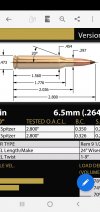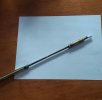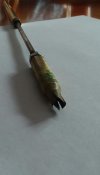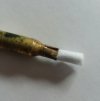Looks pretty normal for boxed ammo. Your neck expansion is also good. There is some leakage/soot that could be improved by turning but, it's not something to worry about if your not reloading or just getting into it.
I guess I would try unfired loaded ammo marking up the bullet, neck and shoulder with a sharpie
and slip them into the chamber and closing the bolt. Extract it, and look for unusual patterns of ink removal. Like 360° rings at the shoulder/neck, the end of the neck if crimped or on the bullet if it's jamming into the lands.
If you have spent brass that won't feed, clean the necks, ink those up on end of neck, neck o.d. and shoulder, slow feed those in. Inspect.
Also a Smith could look at it if you're not seeing patterns develop.





